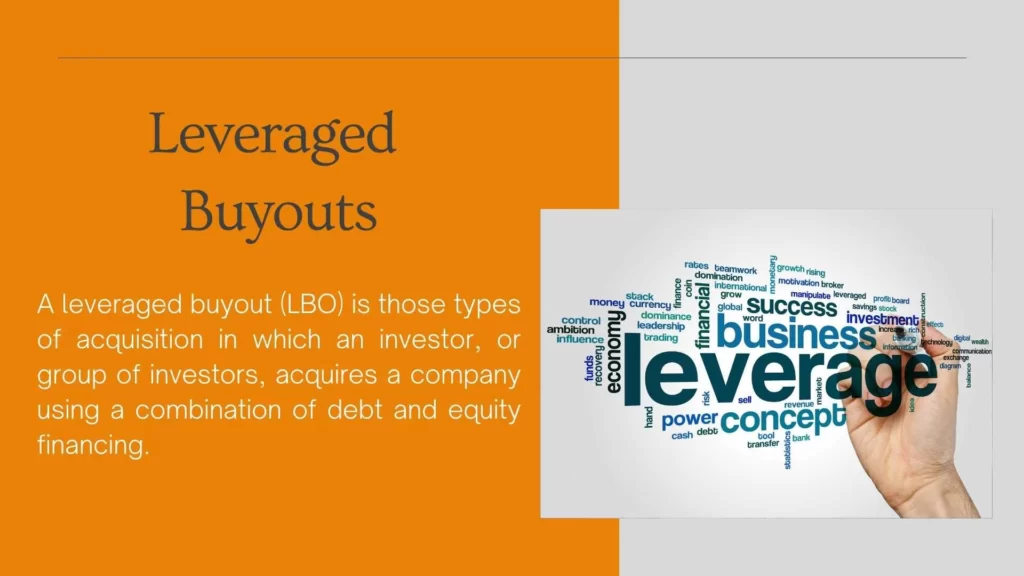Introduction
The acquisition is an essential tool for businesses that want to grow and diversify their offerings. There are many types of acquisition strategies that companies can employ, depending on their goals and objectives. The most common types of acquisition involve strategic alliances, franchising, and outright mergers and acquisitions.
Strategic alliances involve two or more organizations collaborating to achieve mutual goals. This type of agreement usually has a fixed duration with predetermined outcomes and deliverables. Strategic alliances can be a great way to access new markets, technologies, products and services, as well as increase an organization’s competitive advantage.
Franchising is another types of acquisition strategy where one business grants another the right to use its brand name, logo or trademarks in exchange for payment or other benefits. Franchises can be beneficial for both parties since it allows the franchisor to access new markets while the franchisee can benefit from having a proven brand with existing customers.
Lastly, mergers and acquisitions are a type of corporate transaction that involve two or more organizations combining forces (merger) or one company taking over ownership of another (acquisition). Mergers and acquisitions can help increase efficiency by combining resources, eliminating competition by consolidating market share or expanding into new markets through cross-border opportunities.
Overall, the acquisition is an important tool for businesses looking to grow and become more competitive. Depending on your business goals and objectives there are many different types of acquisition strategies from which you can choose: including strategic alliances, franchising, and outright mergers and acquisitions. Following are some of the uses of Types of acquisition.
Stock Swap Transaction

Stock swaps are increasingly popular types of acquisition in today’s business world. They offer an efficient and cost-effective way to acquire another business or its assets without the use of cash or debt financing. The process involves exchanging stock between two companies. This type of transaction typically occurs when a buyer purchases all or part of a target company’s stock in exchange for their own shares.
The most common types of acquisition under a stock swap transaction is called a statutory merger, which involves one company buying out another through a combination of cash and stock. In this types of acquisition, the buyer offers to exchange a certain number of its own shares for each share owned by the target company’s shareholders. This allows the buyer to gain control and ownership rights over the target company while allowing existing shareholders to maintain some ownership stake in the combined entity.
Another types of acquisition under a stock swap transaction is called a reverse merger, which is similar to the statutory merger but with one key difference: instead of exchanging cash for the target company’s shares, the buyer exchanges part or all of its own shares for those held by target company shareholders.
Once again, this types of acquisition allow both parties to retain an ownership stake in the combined entity. This type of swap can be beneficial if the acquirer has more attractive trading terms than its target. Finally, there is also what is known as a non-statutory merger or acquisition, which does not involve swapping any kind of equity between companies but rather involves one firm purchasing all or part of another firm’s assets using only cash or debt financing.
Visit The best investment banking courses
Leveraged Buyout

A leveraged buyout (LBO) is those types of acquisition in which an investor, or group of investors, acquires a company using a combination of debt and equity financing. This means that the acquiring party puts up some of their own capital while borrowing the majority of the financing from other sources. The goal of an LBO is to ultimately increase the value of the company through improved operations or selling off assets.
One the types of acquisition of LBO is a management buyout (MBO). In an MBO, existing management takes control and ownership of the company and uses borrowed funds to purchase the business from its current owners. These managers are typically backed by financial investors or private equity firms that provide capital for the acquisition and hold a minority stake in the company post-MBO.
Other types of acquisition LBO is dividend recapitalization. In this case, companies use debt funding to pay out dividends to shareholders while maintaining their existing equity structure. Often employed as part of a sale-leaseback transaction, this types of acquisition is often used as an exit strategy by companies seeking to reduce their shareholder base prior to going public or seeking other strategic alternatives.
Leveraged buyouts are also used by companies seeking to go private in order to improve operational efficiency and reduce regulatory scrutiny. This can result in reduced costs and increased profitability over time while allowing management more flexibility in running their business without outside interference.
From buying out existing management teams to generating larger returns for shareholders, leveraged buyouts offer numerous benefits for acquiring companies depending on their specific objectives. As such, it’s important for you to understand these transactions so you can make an informed decision about if and when you should pursue an LBO.
Acquisition through Equity

Acquisition through Equity is a common method of acquiring assets or a business, but it’s important to understand the different types of acquisition available. There are three main types: Mergers, Consolidation, and Acquisition through Equity. Each types of acquisition have its own advantages and disadvantages, as well as its own specific nuances.
A merger occurs when two companies combine their assets and operations to form a new entity. The process involves both companies voluntarily agreeing to merge and the formation of an entirely new company. This can be advantageous for both parties because it allows them to achieve economies of scale, access new markets, and take advantage of potential synergies. However, one disadvantage is that the two companies must negotiate any licensing agreements between them in order for the merger to be successful.
Consolidations involve one company taking over another’s assets or operations without creating a new entity. This is typically an attractive option if the target company’s assets or products can be used to enhance the acquirer’s own operations in some way. The main disadvantage here is that it generally requires more negotiation than a merger since all existing contracts must be considered in order for consolidation to proceed efficiently.
Finally, Acquisition through Equity occurs when an individual or group purchases a significant portion of another company’s equity that gives it control over the target firm’s management decisions or operational activities.
It can have benefits such as giving the individual or group a long-term investment in the target firm, but it also carries risks as these individuals may face limitations on how they can manage their investments due to existing ownership dynamics with other parties with equity stakes in the target company. Understanding these different types of acquisition strategies can help you decide which one to choose for a better and more effective outcome.
Have a look at the top investment banking jobs
Acquisition through Debt

Acquisition through Debt is a method of financing that allows companies to acquire assets or other entities. Under these types of acquisition the acquiring company can grow more quickly than it could with its existing resources. This can be an attractive option for companies looking to expand rapidly, as well as for private equity firms who are looking for higher returns on their investments.
When considering an acquisition through Debt, it’s important for companies and private equity firms to do a borrowing cost analysis to determine the potential return on investment (ROI). This can help them assess whether or not the debt-financed acquisition is worth pursuing. It’s also important to consider the impact of interest rate risk when taking out loans, as this could affect their monthly payments and total cost of borrowing.
Additionally, credit ratings should be taken into account when deciding on an Acquisition through a Debt approach. The company’s or private equity firm’s credit rating will influence what type of loans they’re eligible for, as well as the interest rate they’ll receive. Companies looking to leverage debt should review their own credit rating and compare it to those of other major lenders in order to get favourable loan terms.
These types of acquisition through debt can offer many benefits, such as increased growth opportunities and higher ROIs compared to traditional methods of financing acquisitions. However, it should be approached with caution, as there are risks involved with taking on large debts that must be managed carefully.
Before making any commitments, companies and private equity firms should make sure that they understand all the associated risks and rewards in order to ensure that an Acquisition through Debt is right for them.
When exploring acquisition through debt, you should analyze your borrowing costs to assess the feasibility of this type of financing. This includes understanding the costs associated with interest payments and principal repayments over the life of the loan—and how that may affect your bottom line. Additionally, you should also consider any fees associated with obtaining the loan as well as any loan guarantees that would be required.
Interest rate risk is also a factor to consider when acquiring debt. Interest rates can fluctuate which can cause payments on a loan to change over time. Staying abreast of any rate changes and preparing for potential spikes in interest payments can help protect you from unexpected financial strain due to rising borrowing costs. Acquiring another company or asset can be an effective strategy for business growth and success; however, it’s important to understand all aspects of acquisition through debt before making such a large financial commitment.
Calculating borrowing costs and understanding interest rate risk will help ensure that any acquisition decision made is financially sound and tailored best for your business needs.
Wanna Know investment banking salary? Have a look
Cash Acquisition

Cash acquisition is among those types of acquisition, where the buyer pays for the business or asset they are acquiring in cash, rather than through debt or equity. It is one of the most straightforward forms of corporate takeover and can be beneficial for both the buyer and seller. For buyers, this types of acquisition allow them to purchase a company with cash that would normally be used as a loan or other form of financing. Meanwhile, sellers do not have to worry about ongoing payments or contributions to investors.
When considering a cash acquisition, it’s important for both parties to assess their needs and objectives carefully. For buyers, it’s important to ensure that you have sufficient financial resources available to make the purchase without incurring too much debt or too large an investment.
Additionally, it’s wise to calculate all associated costs and taxes ahead of time in order to ensure that you’re making a sensible decision for your long-term finances. Lastly, understanding how different structures could affect future liability from existing liabilities is essential when making the decision whether or not to engage in these types of acquisition strategies.
On the flip side, sellers should evaluate their own financial goals and consider tax implications when making decisions regarding this type of transaction.
It’s important for sellers to understand that they may be receiving less value than what they are selling due to both present and future obligations associated with the deal — such as paying capital gains tax on any proceeds from the sale. Additionally, it’s wise for sellers to seek independent professional advice when considering an offer based solely on cash versus other methods such as stock-based options which may provide additional tax advantages over time.
Acquisition through Mezzanine or Quasi Debt
If you’re considering purchasing a business or making an acquisition, mezzanine financing and quasi-debt can be great sources of capital. Both are types of acquisition financing that are used relatively frequently, but it is important to understand the differences between the two before diving in.
Mezzanine financing is essentially a blend of debt and equity. It can be used to finance acquisitions that involve a significant stock component, and it often comes with more flexible terms than more traditional forms of debt. For example, mezzanine financing usually has its own repayment schedule (often tied to performance metrics) rather than being tied to the existing debt schedule of the target company.
Quasi Debt instruments are similar in nature to mezzanine financing but they typically involve taking a loan against future cash flow or other assets. This makes them much less risky than regular debt because they don’t require immediate repayment in case the acquired company fails to perform as expected.
Quasi Debt instruments are also often used for buyouts of startup businesses since there is no current profits or income stream to draw from yet.
Both mezzanine financing and quasi-debt instruments have their advantages and disadvantages, depending on your specific acquisition plans and needs. It’s important to do your research before making any decisions about which route to take for your acquisition venture. Talk to financial advisors and experienced investors who have dealt with these types of purchases before in order to ensure you make a smart business decision that sets you up for success.
Seller’s Financing acquisition
Seller’s financing acquisition also referred to as ‘owner financing’ or ‘buyer-seller financing’, is when the seller of the business provides the required funds for the buyer to purchase the business without a traditional bank loan. Providing the buyer with flexible and favourable terms, it allows them to buy a business without needing to go through the lengthy process of obtaining conventional financing from a bank or other lender.
When considering a seller’s financing acquisition, there are several distinct. The most common is an instalment sale: in an instalment sale, the payment of the loan is usually spread out over multiple years, with principal payments due at regular intervals (typically monthly or quarterly). These types of acquisition offer greater flexibility in terms of payment structure and interest rate than a traditional loan would have.
Another type is leaseback agreements where ownership transfers but the seller continues operating in some capacity; this allows them to receive regular payments while still seeing some degree of control over their former business. Finally, there are promissory notes which provide immediate cash flow but require larger principal payments over time; this setup can offer attractive rates for more aggressive buyers looking to move quickly on an opportunity.
Seller’s financing acquisitions involve the buyer obtaining financing from the seller rather than a bank or other external lender. This types of acquisition often allows for more flexible loan terms and allows for an easier approval process. It also eliminates some of the other fees associated with taking out a loan from a conventional lender.
When looking into seller’s financing acquisitions, buyers should understand the advantages and disadvantages involved. On the plus side, they often provide more flexibility in closing a deal as well as potentially lower costs in certain areas. On the other hand, buyers may be taking on additional risk if they are not able to pay back the loan on time or if their business fails altogether.
Another key element to consider when looking into these types of acquisition is whether or not there are restrictions placed on how you operate your business after purchase. Many sellers are willing to impose restrictions such as limits on what you can do with their former business so it’s important to understand these restrictions up front and factor them into your decision-making process.
Regardless of which types of acquisition you decide on, it’s important to properly structure and document your transaction so that you fully understand any potential risks involved before signing on with any final agreement. To do this effectively it’s best to seek out advice from experienced professionals such as lawyers and accountants who can help ensure that everything is structured correctly and that you’re getting the best deal possible. Suggested page: Investment banking companies.
Importance of Types of Acquisition in Finance

The acquisition is an important part of finance, as it allows businesses to acquire assets and resources that they would otherwise not have access to. This acquisition process can involve a variety of different types of acquisition, such as mergers and acquisitions (M&A), joint ventures, strategic alliances, and private equity investments. All of these types of acquisition provide different advantages to businesses looking to expand their operations or increase their profits.
When it comes to M&A, it involves the merging or purchasing of one company’s assets by another. Mergers allow companies to combine resources and share costs, while acquisitions often give the buyer control over the target company’s assets and profits.
Joint ventures are also beneficial for businesses because they allow two or more companies to collaborate on a project in order to generate new sources of income or benefit from shared expertise. Strategic alliances involve cooperating with a partner company in order to expand market reach or build brand awareness. Lastly, private equity investments are agreements between investors that provide capital in exchange for ownership stakes in a company.
Each types of acquisition have its own advantages and drawbacks, so it is important for businesses to carefully consider all options before making any decisions. It is also important that businesses have an understanding of the legalities involved with each types of acquisition so that they can ensure that their rights and interests are fully protected.
The importance of acquisition in finance cannot be understated; it allows businesses to acquire assets and resources that would otherwise be inaccessible, giving them the opportunity to grow and increase their profits.
Conclusion
The terms “acquisition”, “takeover” and “merger” are often used interchangeably, but they have distinct meanings. An acquisition typically involves one company buying another, with both firms cooperating in the transaction.
In contrast, a takeover is when one company buys out another company that may be resistant to or strongly oppose the sale. Finally, a merger occurs when two companies join forces to become completely new entities. While these definitions are generally accepted, the exact use of these terms may vary depending on the specific circumstances of each individual case and its motivations for undertaking the transaction.
These types of acquisitions are beneficial to both parties involved, as each company develops strategies to mutually benefit from the purchase. The acquiring company will carefully review financial statements and other valuations associated with the assets being purchased, in order to ensure that they have a clear understanding of any obligations that may come with them.
Additionally, both parties must meet any legal stipulations in order for the purchase to proceed. Once these requirements have been met and all parties agree to the terms, the acquisition is able to move forward.
Frequently Asked Questions
The 3 types of acquisition by high-growth businesses can be divided under: team buy, product buy, and strategic buy. There is also a fourth type called synergistic acquisition.
Two or more companies can join forces by merging, acquiring, or amalgamating. These words don’t have specific meanings, so different people may use them to describe the same thing.
A merger occurs when two companies join forces to form a new company. An acquisition occurs when one corporation buys out another. Both names are frequently used interchangeably.
In a pure conglomerate merger, two companies have no connection. A mixed conglomerate merger happens when two companies join forces to extend their product lines or reach new markets. For example, a manufacturer of athletic shoes might merge with a soft drink company.
Acquisition functions are mathematical tools that help determine how the Bayesian optimization process should search through different parameters. They use information from a Gaussian process model, such as predicted means and variances.
An acquisition is when one company buys another company or its assets. Examples of acquisitions include Google buying Android for $50 million in 2005 and Pfizer buying Warner-Lambert for $90 billion in 2000.
When an organization buys an asset, it must record the purchase in its financial statements at the fair market value. This includes both tangible (for example, property) and intangible (for example, trademarks) assets. The recorded asset is then shown on the balance sheet.
Mergers and acquisitions are not the same things. When one corporation buys another, this is referred to as an acquisition. A merger occurs when two companies combine to form a new company.
The acquisition strategy is an organized plan that describes how the project manager will manage risks, meet goals, and approach acquisition. It considers important business, technical, product support, security, and supportability strategies.
The Ferengi have developed a five-stage process for acquiring things called infatuation, justification, appropriation, obsession, and resale.





